© ROOT-NATION.com - Use of content is permitted with a backlink.
The OPPO Find X3 takes advantage of features that allow it to loudly announce its place in the premium segment of flagship devices. Among them there is even a very interesting and unusual function of the microscope. We tested this smartphone to find out more.
OPPO proved to be a serious player in the smartphone market last year. The Find X2 Pro proved to be one of the best high-end devices in 2020, successfully competing with Samsung, Apple and Huawei. Now that the last of the three companies has all but lost ground due to ongoing tensions with the US government, OPPO has interesting prospects. And I must say that the brand is making quite confident steps in this direction. Most recently, OPPO was able to push back the previous market leader Huawei from the first place in the ranking of smartphone manufacturers in China, and was also able to gain market share in Europe.
My colleague Dmitry Koval already tested the OPPO Find X2. He was impressed with this wonderful smartphone. And I spent an unforgettable two weeks with OPPO Find X2 testing the new version of the OPPO ColorOS 11 shell. Even then, I paid attention to the performance, interesting, fresh design and excellent cameras of the flagship from OPPO.

So when the representative office of the Chinese company offered to test OPPO Find X3 Pro, I was very pleased to agree. It was interesting whether this flagship device could really compete with smartphones from the leading manufacturers such as Samsung, Apple, Huawei, Xiaomi and others. But the greatest intrigue was the incredible microscope camera, which was talked about so much at the smartphone presentation. So, I’m ready to share with you my impressions of the OPPO Find X3 Pro.
What’s so interesting about the OPPO Find X3 Pro?
The Find X series looked very convincing even before its presentation thanks to its many innovative features. But OPPO still lacks the kind of popularity that would position its smartphones as a serious alternative to the ultra-premium products of competitors. The launch of the X3 Find series is the first step in a strategy to establish itself in this market in 2021. The Find X3 Pro is the epitome of the best designs from OPPO. With an attractive design, high-quality screen, remarkable photographic capabilities and high performance, the OPPO Find X3 Pro has every chance to outshine the competition, or at least take its rightful place in the premium segment.

The OPPO Find X3 Pro has everything a premium smartphone should have in 2021: Snapdragon 888, a great QHD+ screen with a 120 Hz refresh rate, a 4500mAh battery with a 65W charger, an attractive fresh glass back design. And what really sets this device apart is the camera with a dual 50-megapixel sensor with an amazing shooting mode: a microscope.
Here are the features of the OPPO Find X3 Pro:
- Dimensions and weight: 164.0×74.0×8.2 mm, 193 g
- Case materials: glass, aluminum
- Display: 6.7 inches, 3216×1440 pixels, 525 PPI, AMOLED, 19.5: 9, 60/120 Hz refresh rate, 120/240 Hz sensor frequency, Vivid mode: 97% NTSC / 100% DCI-P3, Gentle mode: 71% NTSC / 100% sRGB, Cinematic mode: 97% NTSC / 100% DCI-P3, Brilliant mode: 104% NTSC / 100% DCI-P3
- Operating system: ColorOS 11.2 based on Android 11
- Platform: Qualcomm Snapdragon 888, 8 cores: 1×2.842 GHz + 3×2,419 GHz + 4×1.786 GHz
- Graphics: Adreno 660
- Memory: 12 GB LPDDR5 3200 MHz RAM, 256 GB UFS3.1 2Lanes HS-Gear4
- Wireless interfaces: Wi-Fi 6 (802.11ax), Wi-Fi 5 (802.11ac), 802.11a/b/g/n/, Wi-Fi 2.4G / 5.1G / 5.8G. Supported: Wi-Fi Display, Wi-Fi tethering and 2.4 GHz 2×2 + Wi-Fi 5 GHz 2×2), Wi-Fi 5 GHz 160 MHz, Bluetooth 5.2, NFC
- Communication: 4G / 5G
- Navigation: GPS, A-GPS, BeiDou, GLONASS and QZSS
- Sensors and connectors: USB Type C (USB 3.1), OTG, geomagnetic sensor, lighting sensors, accelerometer, gyroscope, pedometer
- Main camera: standard lens – 50 megapixels, optical stabilization, f/1.8, 27 mm, Sony IMX 766 sensor; wide-angle lens – 50 MP, f/2.2, 18 mm, Sony IMX 766 sensor; telephoto lens – 13 MP, hybrid zoom 5x, f/2.4; microscope – 3 MP, f/3.0
- Front-facing camera: 32 MP, f/2.4
- Battery: Li-Pol 4500mAh (two serially connected cells), Qi wireless charging, support for reverse charging, SuperVOOC 1.0/2.0/3.0 with 65W, PD
- Protection: IP68
- Case colors: black, blue
- Sound: stereo, codec support: SBC, AAC, APTX HD, LDAC, APTX, APTX TWS + and LHDC
- Price: in Europe about €1200
What’s in the box?
It’s nice that OPPO did NOT follow Apple and Samsung with their initiative not to add a charger to the box. It’s here. It is a powerful charger with Super VOOC 2.0 support and 65W power. There is also a fairly long and thick USB Type-C cable.

The smartphone itself, a black protective case, paperwork with instructions and a warranty card, as well as a SIM eject tool are also included. There are USB Type-C in-ear headphones because the Find X3 Pro does not have a 3.5 mm port. By the way, the protective glass on the screen is already glued at the factory, providing additional protection, especially for smartphones with curved edges. Standard set for a modern smartphone.

Fresh new design
Nowadays, smartphones are difficult to distinguish from each other by simply looking at them. But the OPPO Find X3 Pro can surprise you at first sight. It’s hard to stay indifferent after the first contact.

The device is both thin (8.3 mm) and lightweight, only 193 g. The front panel almost completely occupies the 6.7-inch screen. The hero of my review has a glass panel that is curved at the edges and a very small hole with a black contour for the front-facing camera in the upper left corner.

Curved display glass, like a waterfall, looks pleasantly bezel-less, as the bezels on the sides are only 1.76 mm wide. The chin and top frame of the smartphone are also very thin, 2.22 and 2.76 mm, respectively, the top also contains a small speaker grid. This front panel design has been used by manufacturers for a long time, so there is nothing new and surprising here.
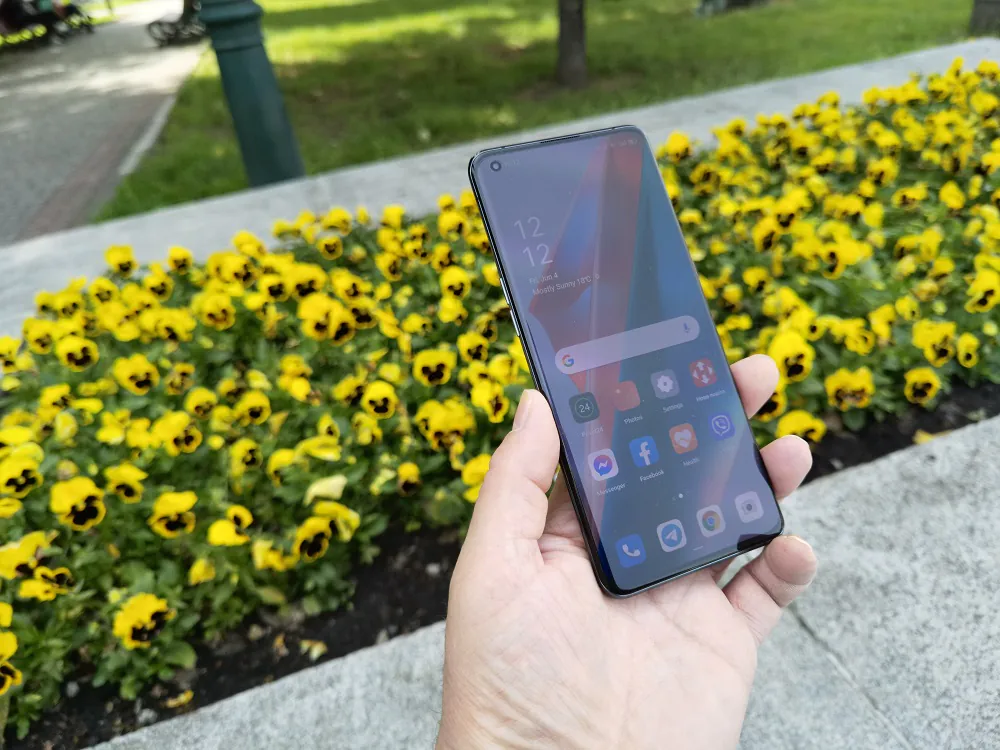
The rear panel is even more interesting. Even during the OPPO Find X3 Pro presentation, I especially liked the interesting-looking camera unit. You can see some kind of similarity to an iPhone, although there is a difference.

In my opinion, OPPO placed four sensors much more elegantly. The back is made of solid cast glass, with a smooth transition between the camera unit and the rest of the device back surface. There’s something magical about such an unusual bend of glass.

This visually smoothes the module’s ledge, but still the OPPO Find X3 Pro is quite shaky when lying on a flat surface. However, the protective case from the box completely corrects this.

I was interested in hearing my friends’ opinions about this original decision. Opinions were divided, but most of them said that this solution is more attractive than what we saw in the iPhone 12 and Samsung Galaxy S21. In addition, the OPPO smartphone is very convenient in your hand, it is lightweight and comfortable to use.
For testing, I got the Find X3 Pro version in glossy black. It’s a real fingerprints magnet. It seems that all the dust of the world instantly finds this glossy surface. Once again, use the case! There is also a blue version on sale, which has a matte coating, so there will definitely be fewer fingerprints and dust on its surface.

When I first tested an OPPO smartphone, I got used to the fact that the power and volume buttons are located on different sides. The Find X3 Pro decided not to break the tradition: on the right side there is a power button and a volume control button on the left side. Note that the keys are conveniently located at sufficient height. Their move is tangible, clear, and the keys themselves are pleasant to the touch. The power button has a characteristic green coating, which seems to hint at the color of ColorOS 11.
Speakers, the USB Type-C port and SIM card slot are located on the bottom edge. The Find X3 Pro finally allows you to place two nanoSim cards there (but it does not have microSD card support), which the predecessor did not. We only have an additional microphone on the top edge.
Both the front and back panels are protected by Gorilla Glass 5, which I think is the best on the market. Finally, the flagship from OPPO has received IP68 dust and moisture protection, which is already becoming the standard for a modern flagship device.

The ergonomics of the smartphone makes a very pleasant impression. The OPPO Find X3 Pro is easy to use, all controls are well placed, although it is quite difficult to control with one hand. You will definitely like the comfortable size and weight of your smartphone. After the bulky Xiaomi and Samsung, the device from OPPO seems like a breath of fresh air.
Very bright AMOLED display with 120 Hz
Another highlight of the Find X3 Pro is its incredibly high-quality display. The smartphone features a 6.7-inch AMOLED (LTPO) panel displaying 3216×1440 pixels (525 dpi), which has a 20.1:9 aspect ratio and covers 92.7% of the usable front panel area.

Our attentive readers undoubtedly noticed the abbreviation “LTPO”, attached to the now famous AMOLED. It stands for “Low-temperature polycrystalline silicon”. This technology appeared a few years ago. It is mainly used in AMOLED panels manufactured by Samsung under the trade name E4 OLED.
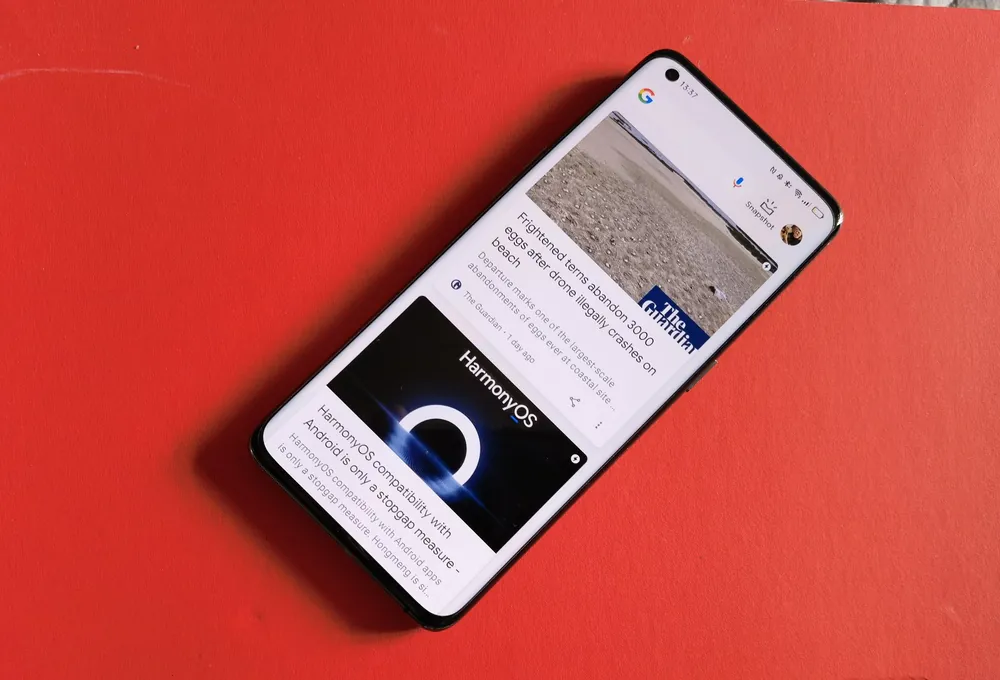
Without going too much into the details, I would like to note that this technology allows you to change the refresh rate, as well as significantly reduces the power consumption of the Always On display type. These are not the only remarkable properties: in addition to reducing blue light radiation (thus guaranteeing less eye fatigue), this LTPO technology also covers 70% of Rec color space.
The latest ITU-R BT.2020 standard, or Rec.2020 gamma, concerns UHD images and videos. Based on 10-bit encoding, it allows you to display a billion colors and therefore reproduce shades that are not available for more common color spaces (e.g. classic DCI-P3, here has 100% coverage). In addition to improved HDR10+ image support, this technology allows you to introduce a color compensation mechanism, great for the colorblind.
Also note that the refresh rate is adaptive, i.e. it is impossible to make the screen display 120 Hz. The smartphone evaluates the user’s frequency update needs and changes it according to the situation.
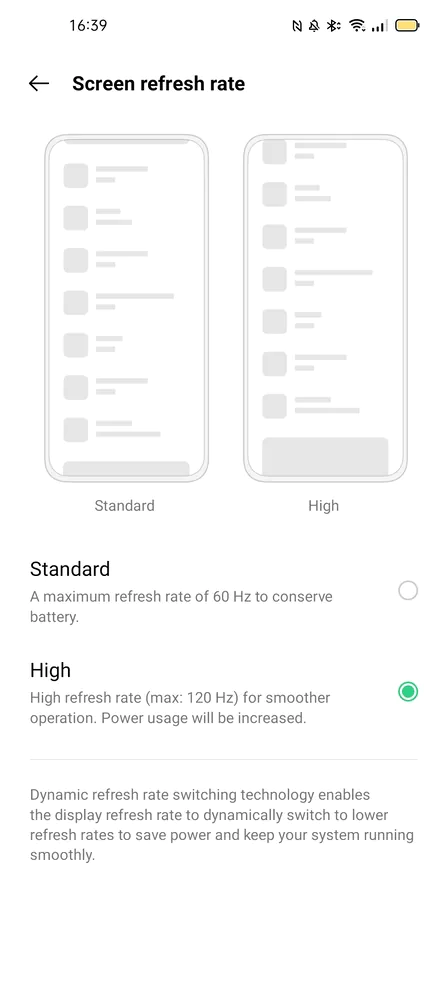
OPPO integrated a Samsung panel similar to the Galaxy Note 20 Ultra panel into the Find X3 Pro. For example, when we scroll Stories on Instagram, it happens with a screen refresh rate of 120 Hz, when we stop the picture, the frame rate decreases. Therefore, the screen can reduce the frequency even to 10 Hz if necessary.

Even on a sunny bright day, the picture and text on the screen will remain readable, and at the maximum brightness we measured, 723 cd/m2, you will never have to strain your eyes.
In the default configuration set to the “bright” option, I observed the coverage of the sRGB color space 155% compared to 103% for DCI-P3, which is wider and more difficult to manage.

There are, of course, many premium smartphones that are better, but these indicators are still quite satisfactory for the user’s eyes. Especially since the average delta E on DCI-P3 is 4.09. Ideally, this figure should be close to 3. Thus, the Find X3 Pro does not deviate too much from the standard.
Like many other smartphones, the Oppo Find X3 has a screen that gets a bit bluish with an average temperature of 7345 K. You will have to go to the screen settings to adjust the color temperature according to your preferences and approach the recommended 6500 K for a better balance.
As I mentioned, in addition to just stunning color reproduction, the Find X3 Pro also has a colorimetric control mechanism controlled by AI. Thus, it adapts the visualization to the ambient lighting and the image on the screen to avoid eye fatigue. The display also has a mechanism to improve low-resolution video to 1080p. The result is often striking, especially on heavily compressed videos from YouTube or TikTok.
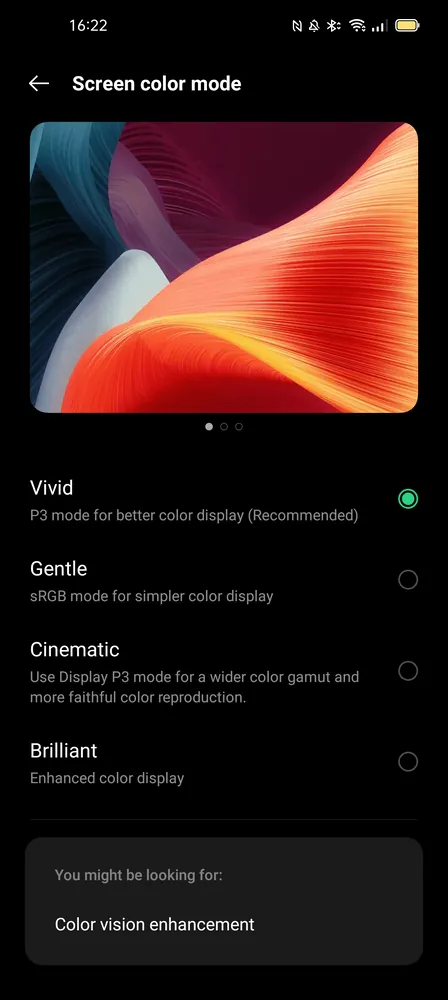
That’s enough with boring details. I was pleasantly surprised by the high-quality, bright and clear Find X3 Pro screen. Very bright, it surprises with its wonderful contrasts, endless black color and calibration accuracy that even Samsung can envy. In addition, four color modes of the screen are available: vivic, gentle, cinematic and brilliant.
The fingerprint scanner is located under the screen, quite close to the base. It’s good. Everything works quickly and conveniently. Perhaps it should have been positioned, in my opinion, a little higher, because it is not always possible to hit the scanner with your finger the first time.

In addition, you also have the face unlock function. Everything here also works as a well-functioning mechanism.
Amazing sound of the OPPO Find X3 Pro
Add to that very good sound quality of the Find X3 Pro. The smartphone is equipped with two stereo speakers and is certified by Dolby Atmos. The sound is surprisingly good, except for the slightly weakened bass, which is due to the low volume of the sound box. However, this is not critical and allows you to listen comfortably to your favorite melodies and songs for hours. I even regretted not having the OPPO Enco X wireless earbuds I had recently tested. I wanted to compare the sound of Richard Wagner’s best works.

To improve sound perception, OPPO has also integrated a well-designed sound profile adjustment mechanism into its smartphone. You select a profile according to your listening environment (indoor, outdoors, public transport, plane) or according to the use case (film, game, music or automatic mode). I chose automatic mode for this test and was not disappointed.
A few words about the included wired headphones that can be connected to your smartphone using the USB Type-C port. They are pretty good, but not perfect either. The good news is that the Find X3 Pro is compatible with most high-definition codecs.
Excellent performance
The performance of the Oppo Find X3 Pro is excellent. At this stage, you can’t expect better performance on the Android market. The flagship from OPPO is equipped with the most modern Snapdragon 888 processor (1×2.84 GHz Kryo 680, 3×2.42 GHz Kryo 680 and 4×1.80 GHz Kryo 680), which is designed according to a 5-nm manufacturing process. The chipset is complemented by an Adreno 660 GPU and 12 GB of LPDDR5 RAM. The smartphone also has 256 GB of UFS 3.1 flash memory, which unfortunately cannot be expanded. Yes, there’s no 512 GB like in the Find X2 Pro, but OPPO tells us that only 2% of users are using more than 200 GB of storage, and for the vast majority 80 GB is enough.
There’s also support 5G network and Wi-Fi 6. NFC and Bluetooth 5.2 modules are also available. With such an impressively productive set, Find X3 Pro seamlessly brings even complex 3D games like PUBG Mobile. And in the appropriate game mode, you can monitor the operation of the device, hide alerts and automatically reject calls.
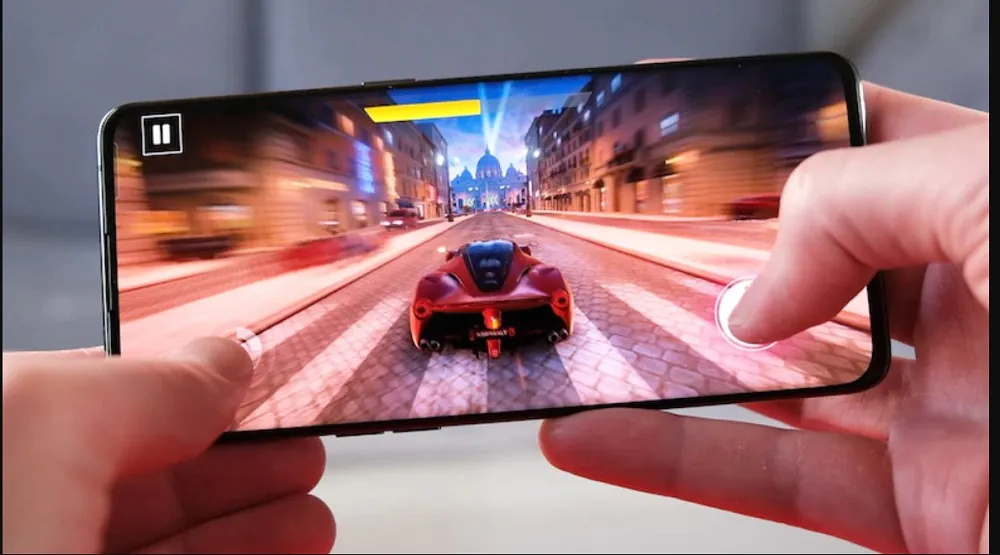
Not surprisingly, the Snapdragon 888 chip allows the Find X3 Pro to establish itself as one of the most powerful smartphones on the market, along with flagships such as the Samsung Galaxy S21 Ultra, OnePlus 9 Pro and Mi 11 from Xiaomi. Therefore, it will meet the needs of all users, and even the most demanding of them. It’s a powerful modern flagship. Synthetic tests prove it.
The high performance mode that can be activated in the battery settings helps a lot, while avoiding overheating. Instead of constantl amplification of the processor, OPPO has developed an algorithm that improves performance only when the user requires it. Yes, throttling hasn’t gone anywhere, although there’s on SoC Snapdragon 888, but I was pleasantly surprised that the smartphone did not heat up critically during the game or video recording, unlike its competitors. Despite the very thin frame, the steam chamber space has been increased by 28% to cool the components. That’s why I didn’t notice a single overheating, and I conclude that everything seems to work almost perfectly.
ColorOS 11.2 based on Android 11: it keeps getting better
All this power is controlled by Android 11 with ColorOS 11.2 shell, which are available right out of the box. Personally, I really like ColorOS 11 in terms of personalization capabilities of my smartphone, multitasking and functionality. I liked it a lot when I wrote about the ColorOS 11.
It’s a heaven for customization addicts. They will be able to change the appearance of icons, adjust their size and shape. Color accents can also be changed, like in Windows or macOS. Dark mode has an additional intermediate shade to avoid excessive darkening of the UI.
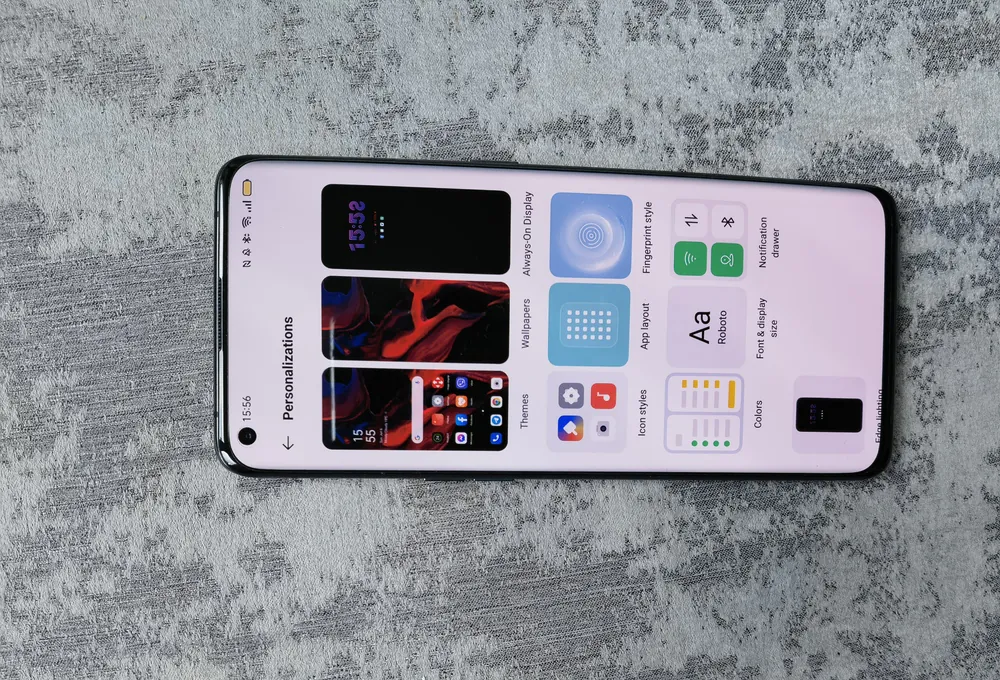
Multitasking is also part of the UI with its split-screen control, miniature app configuration or a window mode. You will like the ability to take a screenshot with three fingers, or translate the text displayed on the screen. Yes, these are not new, but such useful features.
I also liked the system cloning mode, which allows you to create a second Android environment completely independent of the first. For example, apps and personal data invisible to the main interface may be stored there. Switching from one to the other is done by assigning a specific encoding. Then to unlock the smartphone, just use a fingerprint or a code.
You can also still create a secure repository to protect documents without cloning the entire interface. You also need a password or fingerprint to access it.
Easy to use, convenient and efficient ColorOS 11.2 confirms its reliability, and becomes a serious competitor to Samsung’s One UI 3.0, which, in my opinion, is still the best on the market. But for how long?

Excellent battery life and ultra-fast charging
From the modern flagship we want not only maximum performance, but also good battery life. I don’t think anyone is interested in charging their mobile device several times a day. Fortunately, in today’s smartphone world, you don’t have to do this, even if you have a budget device. Yes, the smartphone is not a record holder in terms of battery life, but you will definitely not have any problems with round-the-clock operation from one charge. I even managed to hold out for a day and a half sometimes, but I never tried any games, and only did everyday things, sometimes took pictures and chatted on social networks. I think charging your smartphone once a day has already become the norm.
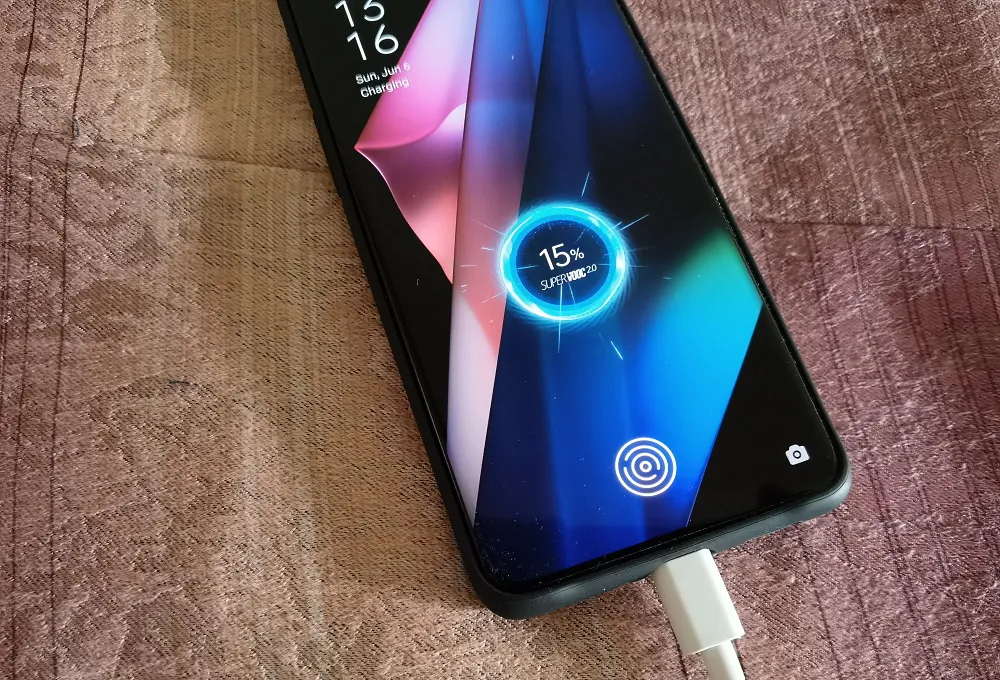
To power all the Find X3 Pro components, OPPO has two 2250 mAh batteries, i.e. the total capacity is 4500 mAh. This two-battery system allows OPPO to provide ultra-fast charging without overheating your smartphone. Included 65W charger supports Super VOOC 2.0 ultra-fast charging technology. The manufacturer promises that you can fully charge the Find X3 Pro in just 35 minutes, and 5 minutes of charging will provide 4 hours of video playback. Seems true enough. I spent 38 minutes on full charge. It’s really amazing when you see the charge percentage rise instantly before your eyes.
| Charge level | Time to charge, min |
|---|---|
| 10% █ ░ ░ ░ ░ ░ ░ ░ ░ ░ | 2 |
| 20% █ █ ░ ░ ░ ░ ░ ░ ░ ░ | 5 |
| 30% █ █ █ ░ ░ ░ ░ ░ ░ ░ | 8 |
| 40% █ █ █ █ ░ ░ ░ ░ ░ ░ | 12 |
| 50% █ █ █ █ █ ░ ░ ░ ░ ░ | 16 |
| 60% █ █ █ █ █ █ ░ ░ ░ ░ | 19 |
| 70% █ █ █ █ █ █ █ ░ ░ ░ | 24 |
| 80% █ █ █ █ █ █ █ █ ░ ░ | 29 |
| 90% █ █ █ █ █ █ █ █ █ ░ | 34 |
| 100% █ █ █ █ █ █ █ █ █ █ | 38 |
Last year’s Find X2 Pro lacked wireless charging — an almost inexcusable drawback for a premium smartphone. OPPO heard us: the Find X3 Pro supports wireless charging up to 30W with AirVOOC technology, which promises a full charge in 80 minutes. I was unable to verify this result because the AirVOOC charger was not included with my smartphone. But since it is compatible with the Qi standard and can therefore works with most 5 and 15W chargers that are on the market, I checked from another charger, and phone charged in about 100 minutes. It hardly heats up, too.
The OPPO Find X3 Pro also supports 10W reverse charging, which is very useful for increasing the operating time of wireless accessories (connected watches, headphones). In short, as far as charging goes, the new Find X3 Pro is the gold standard.
The OPPO Find X3 Pro cameras: two 50 MP each and a portable microscope
You may remember that last year, OPPO chose a basic camera with three lenses and periscopic magnification for the Find X2 Pro. This year we got four modules, no periscope and a… microscope. Some people may find this strange, but the new microscope feature is so exciting and amazing that you will agree to such changes.

The rear camera consists of four modules. The main one has a 24 mm f/1.8 lens, as well as a 50-megapixel IMX766 sensor developed jointly with Sony Electronics. It has phase autofocus based on 2×2 OCL (on chip) technology, which ensures accurate and fast focus even on moving objects.
Another interesting feature is the introduction of DOL-HDR (Digital Overlap HDR) technology, which reduces shooting intervals between long and short exposure images. If that doesn’t impress you, just remember that DOL-HDR significantly improves the overall sharpness of an HDR shot, reducing the light footprint effect that we sometimes see in this type of imagery.
The ultra-wide-angle module is built on the same Sony IMX766 sensor, and therefore it has similar specifications. The main difference is the lens (15 mm f/2.2), which uses a free-form lens whose surface corrects distortion. Less digital processing is required, so that the image you take changes less than usual.
The telephoto lens has a 13-megapixel sensor and a 52 mm f/2.4 lens. It acts as a 2-fold optical zoom, and can give a 5X increase with hybrid zoom. Eventually, it achieves a 20-fold zoom in purely digital mode (the algorithm “guesses” the missing details of the image, with varying success).
Finally, the microscope has a 3MP sensor with a 15 mm f/3.0 lens. It has a zoom factor of up to 60 times and a tiny backlight ring to properly illuminate the scene.
Note that OPPO now only relies on 10-bit encoding for both photos and videos. Still or moving images, HEIF (photo) and HEVC (video), everything can be done in 10 bits.
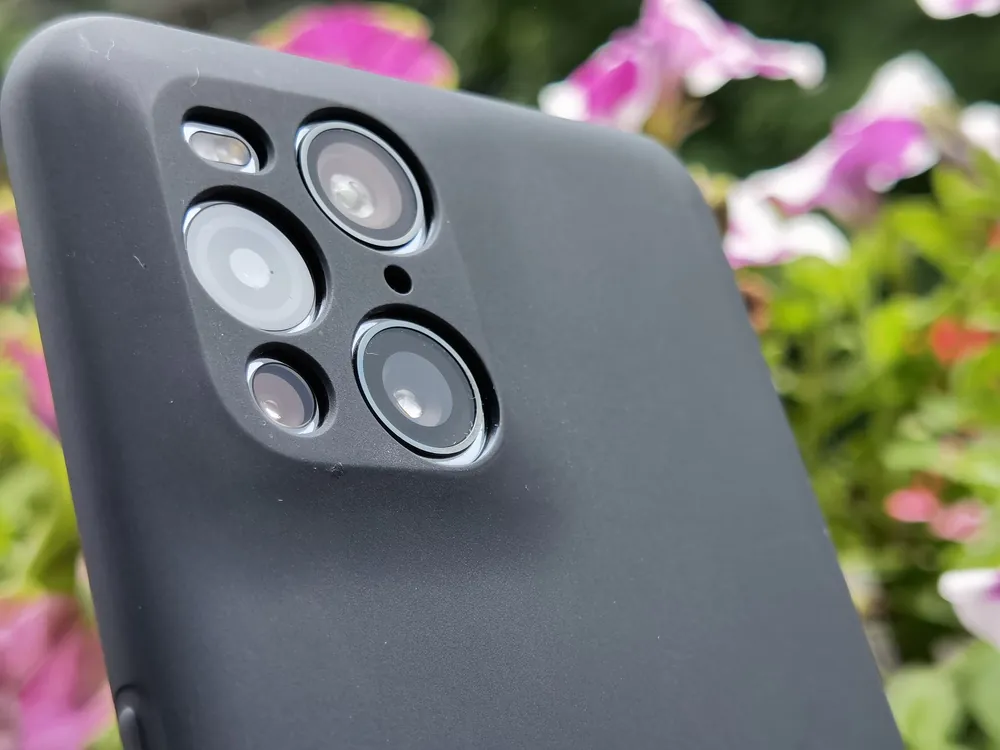
Support for 10-bit video format RAW and LOG (RAW equivalent for moving images) theoretically opens up interesting opportunities in post-production with compatible and properly calibrated equipment.
Let’s move from theory to practice now. In daylight, sometimes you have to deal with a slight increase in colors due to the obvious enthusiasm of AI. To avoid this, feel free to turn it off, especially when shooting under direct sunlight. In these conditions, colors are reliably reproduced, especially when shooting HDR.
Scene details are perfect both in the center of the image and at the edges of an ultra-wide angle with x5 scaling. The x10 is a little worse, but they don’t create too much problem (you need to look at the images on your computer to see it 100%).
There is a lot of noise in such pictures. This does not mean that the images are unusable, their quality is quite decent. You’ll just have to avoid cropping them.
Night mode is also convincing. By zooming in, you inevitably notice the loss of details in dark areas. Again, nothing really dramatic if you don’t want to zoom too much. Stabilization largely avoids camera jitter, potentially caused by long exposure time.
The artificial blur of the background in portrait mode is also very good. Admittedly, AI allows itself to be fooled from time to time with the complex details of the scene, but the result is mostly flawless, even if it is not equal in quality to what we would get with a real lens.
But the real furor was caused by a microscope mode. Yes, you read correctly – the smartphone has a microscope sensor. Rather than always focusing on photos taken at a long distance, OPPO prefers to dive into the infinitely small universe.
This shooting mode is probably the most impressive I’ve had to test in recent years. OPPO has added an LED ring to its optics, like in a microscope. And the results are impressive. Driven by an irresistible desire to get photos of almost everything around me with a microscope, I took a large number of photos of various objects. Below is a series of photos taken with a microscopic lens. Try to guess what object or material is in the photo.
Why such a microscopic sensor in modern smartphones? I’m sure almost everyone has asked themselves this question. First of all, it’s quite interesting and informative. We all want to look into the mysterious, the unknown. Such a sensor gives us this opportunity. Just put your smartphone on your jeans and you’ll see what thinnest threads they were made of.
Secondly, it can be used by schoolchildren and students. They will be able to look into the microworld, see the composition of substances, fabrics, wooden surfaces, etc. You’ll have your own microscope in your pocket. For some reason, it seems like a feature from the future, and I am sure that soon competitors will copy such an innovation.
I quickly realized that I was particularly interested in using the microscope on textiles. The threads of my jackets, pants, sweaters or sheets are no longer a mystery to me!
PHOTO AND VIDEO SAMPLES IN THE ORIGINAL RESOLUTION
Regardless of the shooting mode, I have not encountered any issues with autofocus, which, in my opinion, was accurate and fast. I really liked the OPPO Find X3 Pro camera.

The flagship from Oppo can also shoot excellent video, has slow and accelerated shooting modes. The latter also provides up to 480 frames per second in HD, or 240 frames per second in Full HD.

At normal speed, the main camera with image stabilization records 4K video at 60 frames per second, while the front-facing camera is limited to Full HD and 30 frames per second. And for all users who are looking for creative ways to create interesting photos, there is an automatic filter selection.


The front module has a fairly convincing 32-megapixel sensor. Thanks to very good light control, the selfies are detailed and pleasant. Portrait mode offers a decent bokeh effect, but it becomes much more effective in combination with background modules.

I believe that the photographic capabilities of the Find X3 Pro are among the best for today. It’s a very pleasant surprise for me and I’m sure it will be for those who want to buy it.
Verdict
For the first time in many years, I caught myself thinking that I didn’t have enough time to test a smartphone. Wanted to know more and more about the OPPO Find X3 Pro. One thing I know for sure is that this smartphone will definitely be a success.
The new device from OPPO has many advantages. Interesting, fresh design that makes it marketable, a great, high-quality display with an adaptive 120Hz refresh rate, a modern powerful Qualcomm Snapdragon 888 processor, quality main cameras, an amazing microscopic sensor, fast wired and wireless charging are far from a full list of everything you find in the Find X3 Pro. Yes, there’s no support for 8K video, and the ColorOS 11 OS takes some getting used to, and €1200 is a steep price, but the OPPO Find X3 Pro is undoubtedly one of the most innovative smartphones on the market.

Subscribe to our accounts:



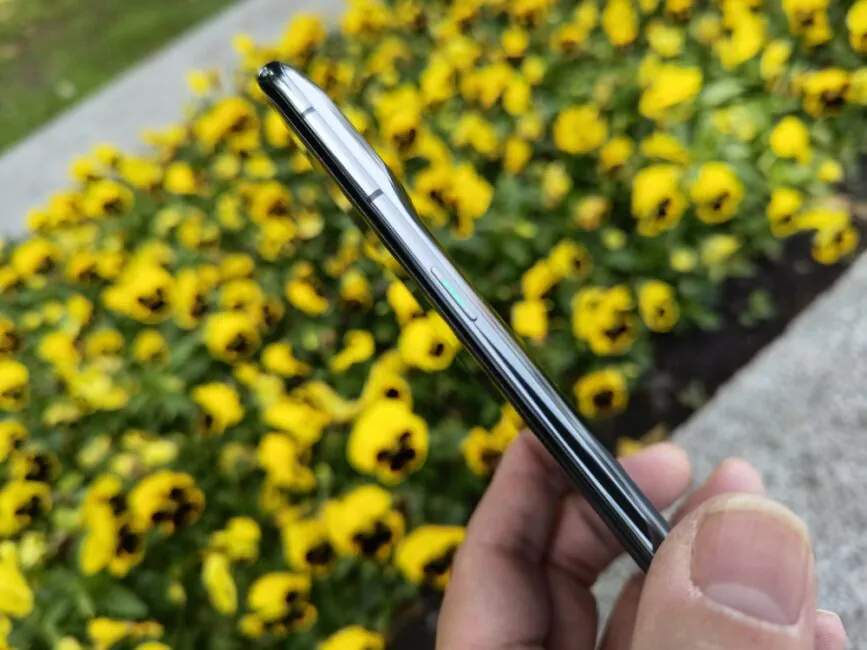












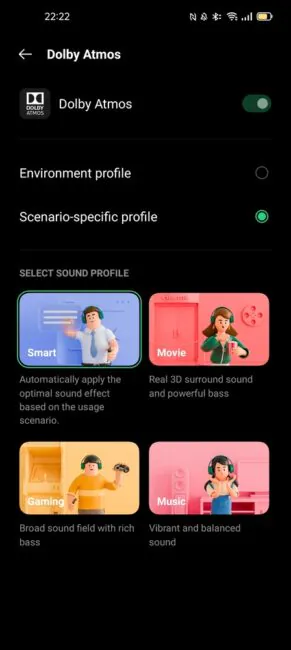
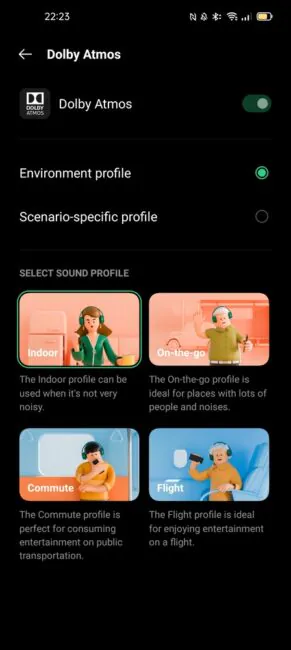













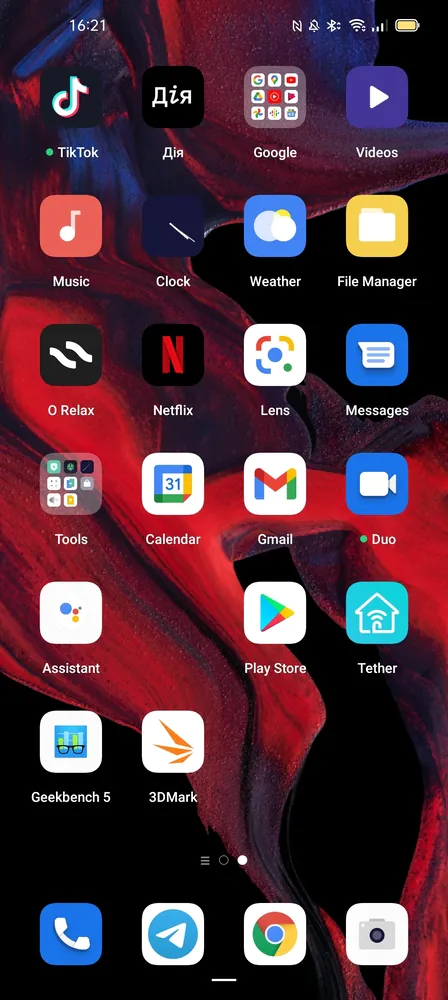







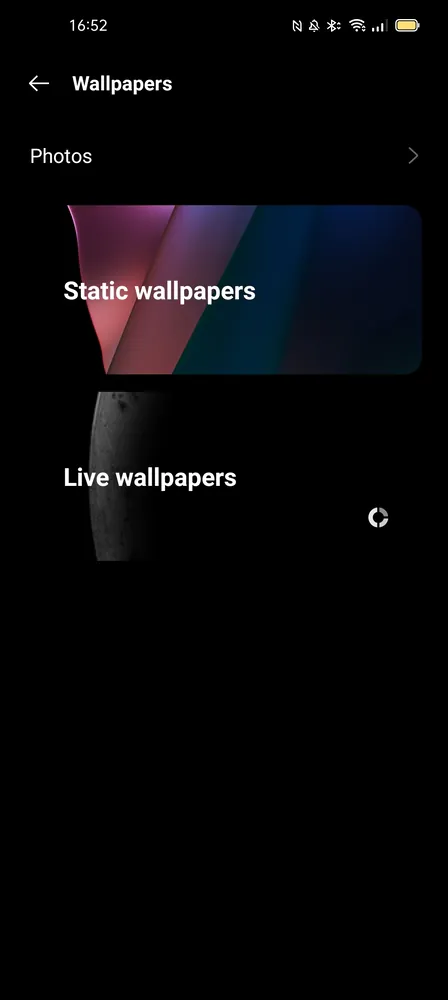

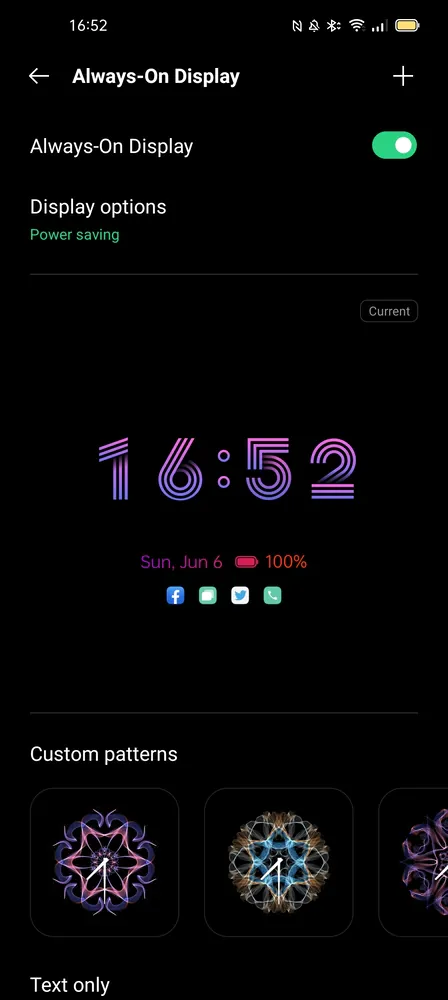








































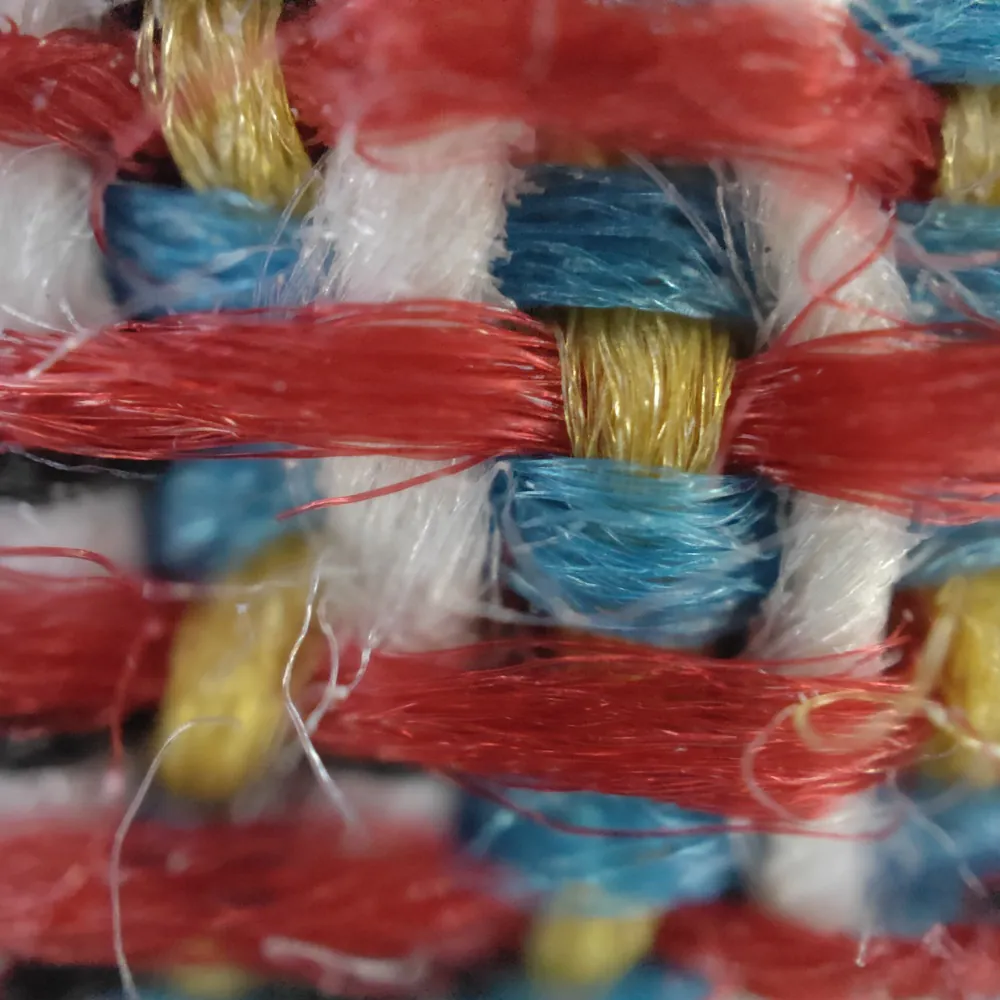






Greqt article, thank you.
So since this is a root nation, how can I root this phone?